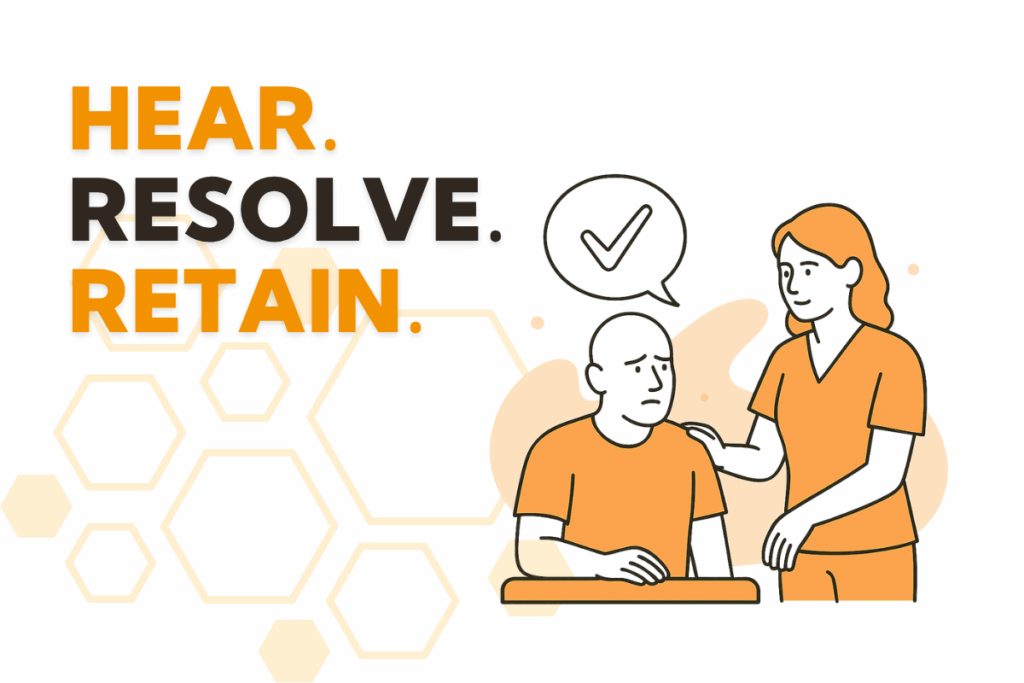Turn Complaints Into Opportunities for Growth
Handling client dissatisfaction in massage clinics isn’t just a soft skill—it’s essential to long-term success. A 2023 service industry report revealed that nearly 68% of clients won’t return after a negative experience. Even more concerning, many will share that experience with others. The good news? When issues are addressed promptly and respectfully, those same clients are more likely to return—and even recommend your clinic.
As a clinic owner, you know you can’t please everyone every time. What sets successful clinics apart is how they respond when something goes wrong. The key isn’t to eliminate every complaint—it’s to develop a clear, consistent approach to handling concerns with empathy, professionalism, and follow-through.
When done well, this approach doesn’t just protect your reputation—it strengthens it. By recognizing common sources of frustration, equipping your team with the right communication tools, and implementing systems to improve service, you can turn one-time complaints into long-term loyalty and growth.
Common Causes of Dissatisfaction in Massage Clinics
Most client dissatisfaction stems from a breakdown in expectations, communication, or professionalism.
Often, clients arrive expecting one type of treatment—like deep tissue massage—and receive another. This usually isn’t about poor service but unclear communication. Intake forms might not capture preferences clearly, and therapists may hesitate to ask detailed questions during the session.
Communication missteps can also make clients feel unheard. If there’s no check-in during the massage or if aftercare instructions are vague, dissatisfaction tends to build silently. Add in unclear policies around tipping, cancellations, or refunds, and even a great massage can end on a sour note.
Sometimes, the problem isn’t the massage at all—it’s the environment. A cold room, late-running appointments, or a disorganized front desk can quickly undermine the entire experience. Clients evaluate their time with you as a whole, not just what happens on the table.

Preventing Issues Before They Arise
The client experience starts long before the therapist enters the room. A strong intake process is your first opportunity to set expectations. Go beyond just checking boxes—ask what kind of results the client is looking for, whether they’ve had negative experiences in the past, and what pressure feels comfortable to them. Tools like Hivemanager’s customizable intake forms can help automate and standardize this process.
Communication should be simple and consistent. Greet clients warmly and confirm their goals before beginning. During the session, take a moment to check in and make sure the pressure feels right. At checkout, ask how everything felt—not as a formality, but as a genuine invitation for feedback.
Consistency across your clinic is critical. That means dependable appointment times, clear cleanliness protocols, and well-communicated policies. When every team member—from the front desk to the treatment room—shares the same standards, clients feel more confident in your care.
Responding to Complaints with Confidence
When a complaint comes in, your first job is to listen—without defending or explaining. Let the client speak, then reflect what you’ve heard: “It sounds like the session didn’t meet your expectations because…” Acknowledge their feelings, even if the concern seems minor.
Next, investigate the situation internally. Review session notes and intake forms. Speak with the therapist to understand their perspective. Look at whether this issue could be part of a larger pattern.
Resolution should be timely and fair. Some clients may want a refund, but many simply want to feel heard and valued. A sincere apology, a credit toward a future session, or a thoughtful follow-up message often goes a long way. Aim to respond within 24 to 48 hours—any delay risks deepening their frustration.
Document what happened and how it was resolved. Use that information to update your internal training, adjust policies, or refine your intake process. Every complaint is an opportunity to improve your system.
Creating a Feedback-Driven Culture
Don’t wait for issues to escalate—invite feedback consistently. Post-session emails or text surveys can help you catch concerns early. You can also add an anonymous suggestion box at the front desk to give clients another way to share their thoughts.
Train your team to view feedback as a tool for growth. Roleplay common scenarios, practice active listening, and explore de-escalation techniques together. When staff feel supported, they’re more likely to handle complaints with grace and professionalism.
Make your policies clear and client-friendly. Use simple, conversational language. Post them on your website and display them in your clinic. If you charge for late cancellations, explain why: it protects your team’s time and income. When staff can confidently communicate these policies, clients are more likely to respect them.

Strengthening Client Relationships Over Time
Trust is the foundation of long-term client relationships. A thank-you message after a first visit or a personalized follow-up with self-care tips can go a long way in making clients feel seen and valued.
Even with loyal clients, treat complaints with care. Listen attentively. Thank them for speaking up. Let them know what you’ll do differently next time. Use session notes to highlight progress and celebrate wins. Mention how their shoulder mobility has improved or how their stress levels seem more manageable. Clients want to feel that their investment is making a difference—and that you’re invested in them, too.
Build Loyalty Through Responsiveness
No clinic is perfect—but clients don’t expect perfection. They expect responsiveness. Clinics that actively listen, learn, and improve based on client feedback don’t just avoid bad reviews—they create meaningful, lasting relationships.
Handling client dissatisfaction in massage clinics isn’t about damage control. It’s about showing your commitment to care, even when things don’t go as planned. When you view complaints as opportunities—not interruptions—you foster a culture of trust, accountability, and growth that benefits everyone involved.
FAQs
Follow up with clients quickly after their session and invite them to share feedback privately. Address concerns early before they escalate.
Not always. Start by listening. Often, a credit toward a future session or a complimentary add-on is more appropriate than a full refund.
Provide training on active listening and emotional intelligence. Roleplay real-life situations and encourage team discussions on how to handle difficult conversations.
Review session notes, intake forms, and therapist feedback to get an objective view. Even preference-based complaints can point to communication gaps worth improving.


